Making of Nina, A Punk Kokeshi
A photo report by Adam Jaromir on collaborating with Kokeshi artist Noboru Wagatsuma (Photos: Yuuki Hasaka)
Adam Jaromir |
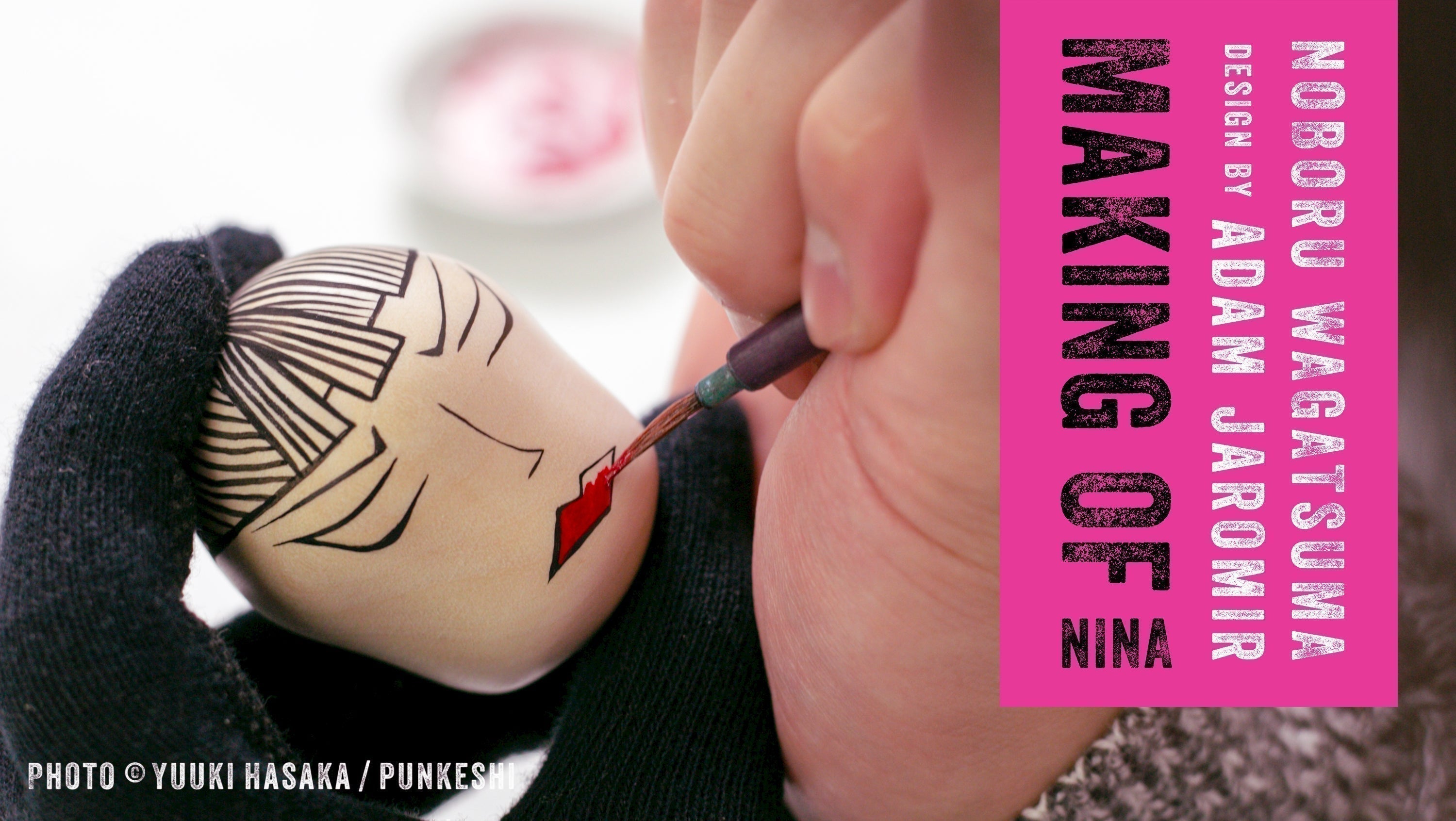
-
As a collector of beautiful—though at times slightly 'quirky'—Kokeshi, I’ve always had a soft spot for the creations of Hideo Ishihara, Tanaka Harumasa, and Aida Seiho. Eventually, I came up with the idea of designing a Kokeshi of my own. Of course, it had to be something quite out of the ordinary: with a bright green mohican, a studded jacket, and the untameable spirit of the 'Godmother of Punk' herself. A Kokeshi that defies conventional gender norms—and stands in stark contrast to anything 'kawaii.' At the same time, it needed to reflect true artisanal mastery.
A sketch was quickly drawn up, but with my two left hands, actually making it was out of the question. Luckily, I managed to bring Noboru Wagatsuma on board—a gifted and seasoned Kokeshi artist. I presented him with a series of drafts, most of which he welcomed enthusiastically. However, as Wagatsuma-san is one of the most prolific Kokeshi artists of his generation and always in demand, I had to wait a little longer.
At last, in January 2025, the time had come. To document Nina’s creation for our readers, Noboru Wagatsuma was accompanied throughout the process by photographer Yuuki Hasaka.
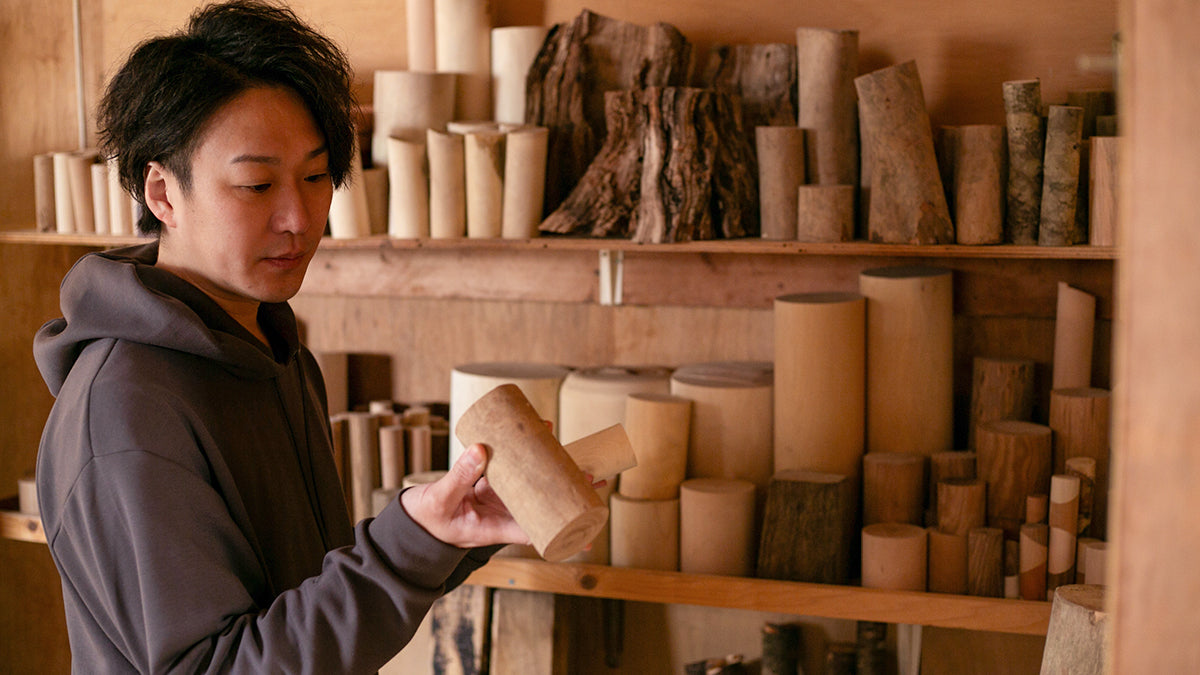
The crafting process generally begins with selecting the right wood. Cherry, maple, and mizuki (Japanese dogwood) are often chosen for their density and excellent workability. Japanese artisans place great value on sustainable sourcing. After being felled, the wood is air-dried for several months—sometimes up to a year—to reach the ideal balance of strength and moisture.
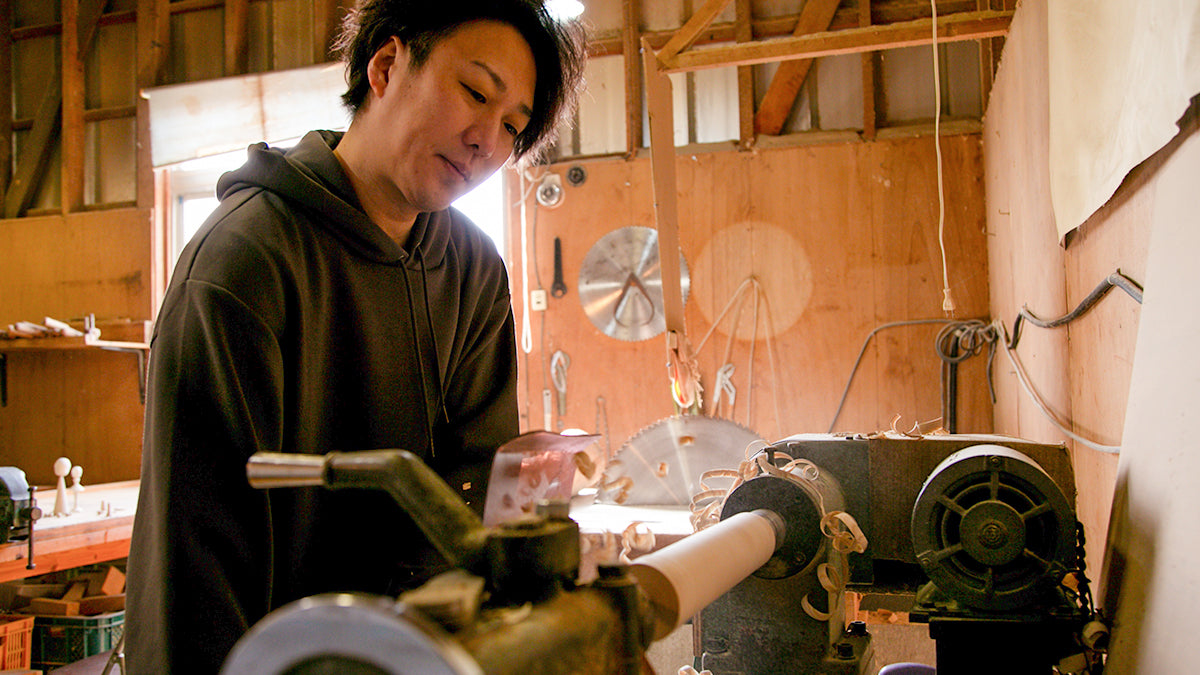
In Nina’s case, mizuki was selected. The block of wood was roughly shaped on a lathe—forming an oval head and conical body. One particular highlight is Nina’s signature mohican: a finely turned attachment, also made of mizuki wood. Another version of Nina features a ponytail made of wooden beads.
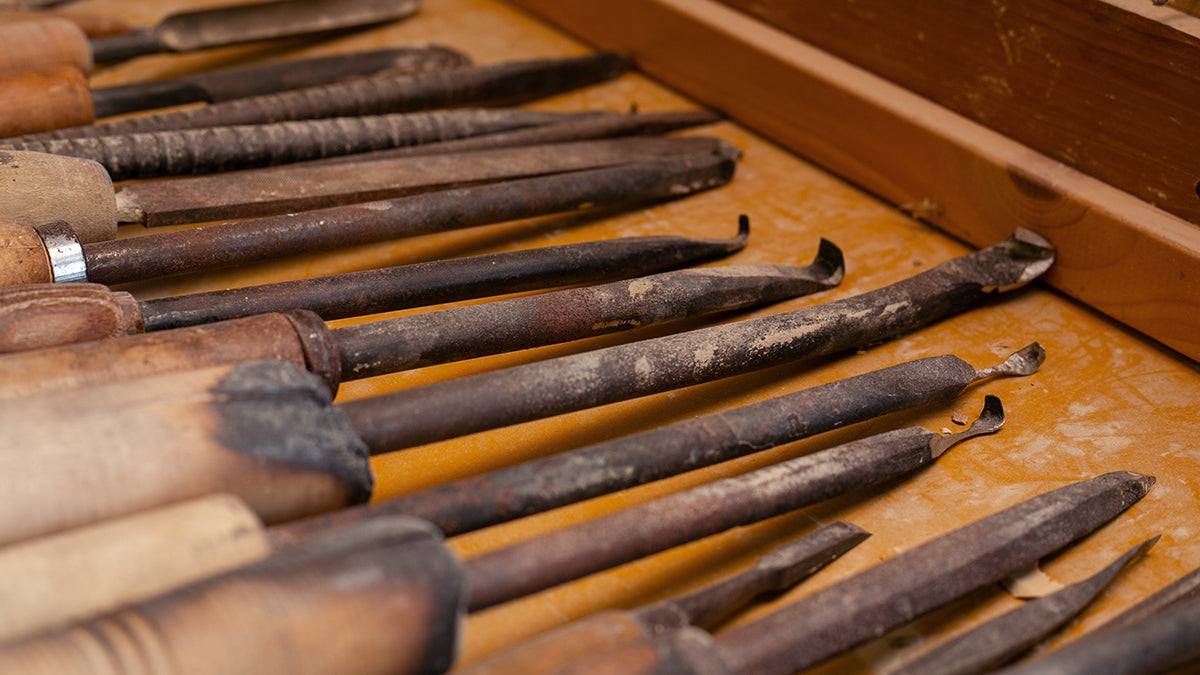
Traditional techniques were used—some tools handed down through generations. Before painting, the surface was carefully sanded until perfectly smooth. The head was also bleached to give it a porcelain-like appearance.
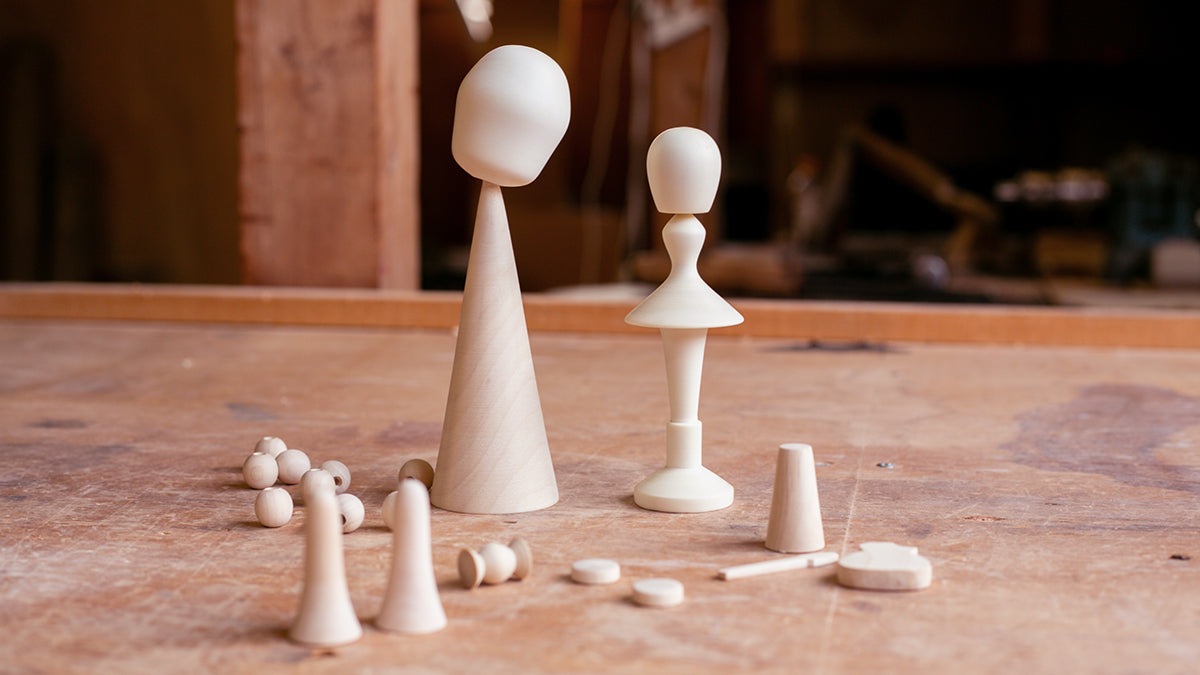
Before painting, the surface was carefully sanded until it was completely smooth. The head was later bleached to achieve a porcelain-like effect.
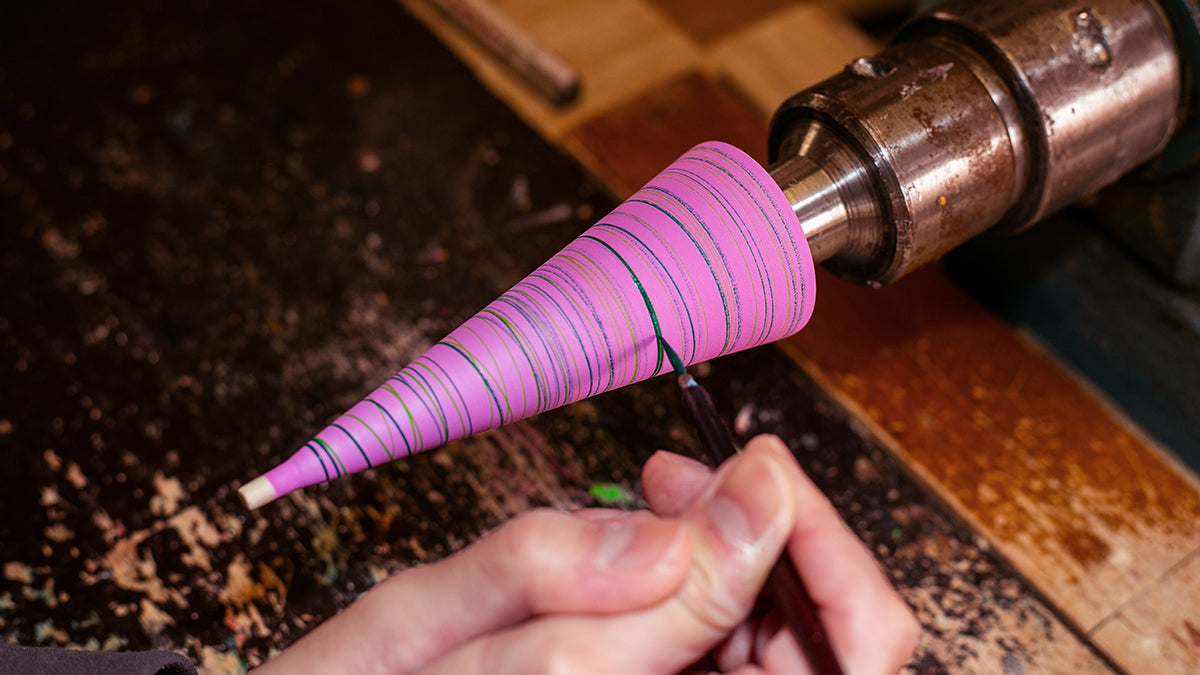
The delicate stripe pattern on the body is precisely applied using the lathe.
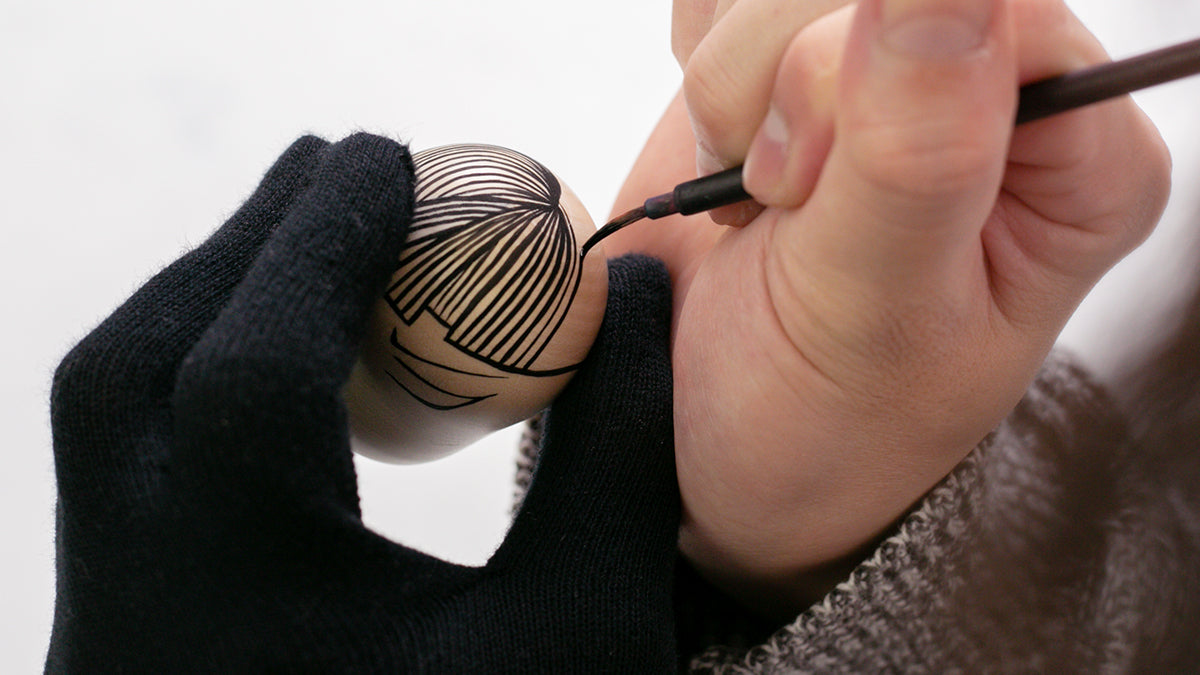
With black ink and colourful acrylics, facial features and further patterns were painted—ranging from zips to skulls (as Nina, being a rock chick, absolutely needs a cool leather jacket) to a wild leopard print.
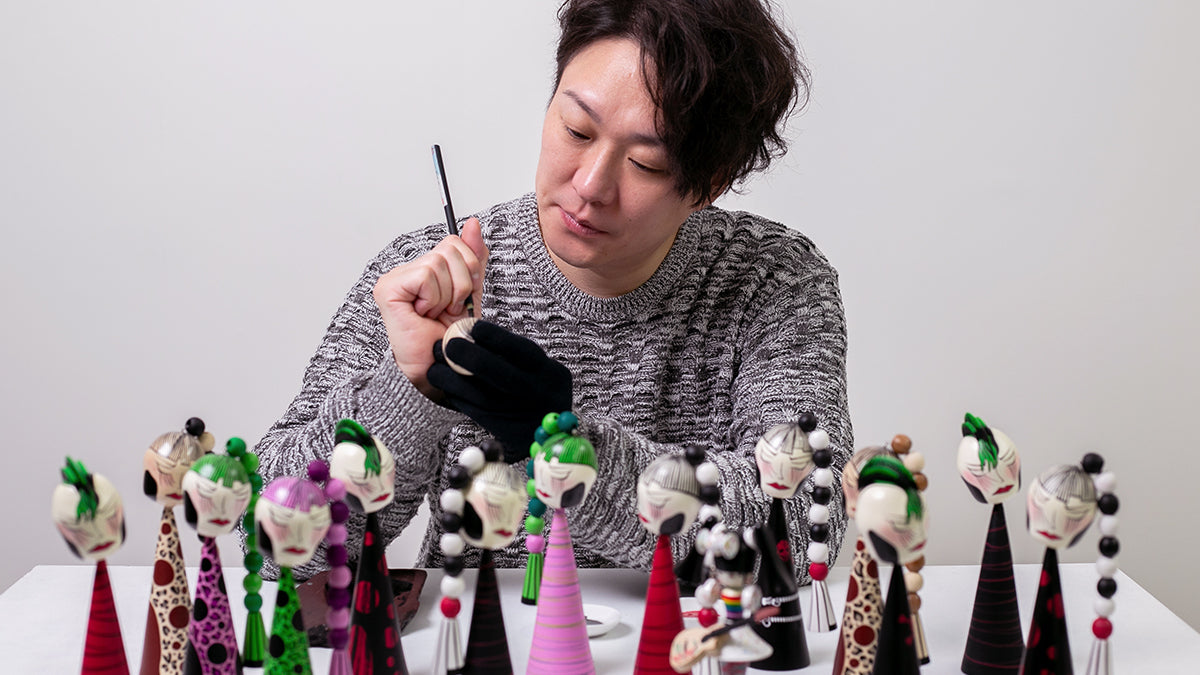
Every brushstroke, every nuance of colour was chosen with care to achieve the desired effect—a process full of dedication and creative energy. Finally, the Kokeshi was coated with a protective lacquer, which gives it a gentle gloss and makes it more durable. This is how our Nina emerged from a simple piece of wood in many individual steps—an expressive figure with character: wild, colourful, and uncompromisingly cool.
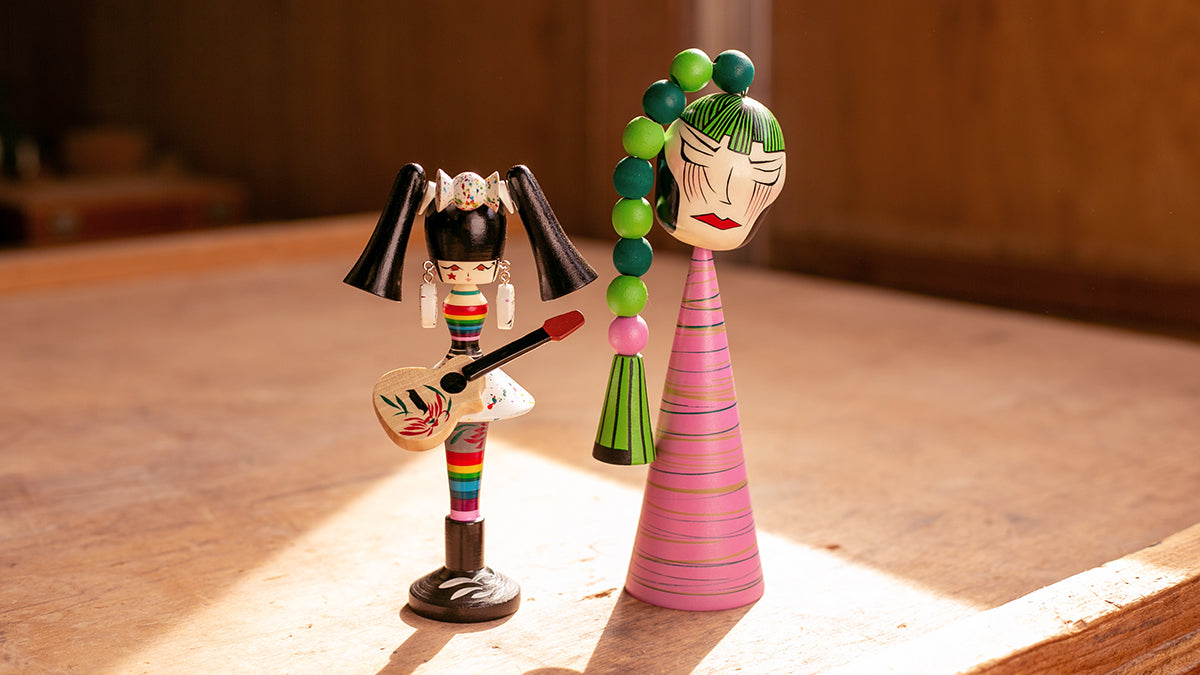
To keep things interesting, there are several bold versions of Nina: with a rebellious mohawk or a voluminous ponytail, with a studded jacket featuring skulls, with a leopard print, or even subtly striped. However, Wagatsuma-san’s version captivates with Nina's 'signature look'—the spectacular hairstyle, the colourful outfit, and a flower-power guitar. Feel free to take a look at our selection...
-
Acknowledgements
At this point, I’d like to extend my heartfelt thanks to Noboru Wagatsuma for embracing this bold project with such enthusiasm. I hope the result of this unique collaboration sparks your curiosity for one-of-a-kind Kokeshi too...
Special thanks also go to Yuuki Hasaka for the striking photographs.
